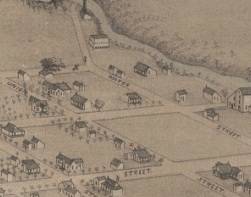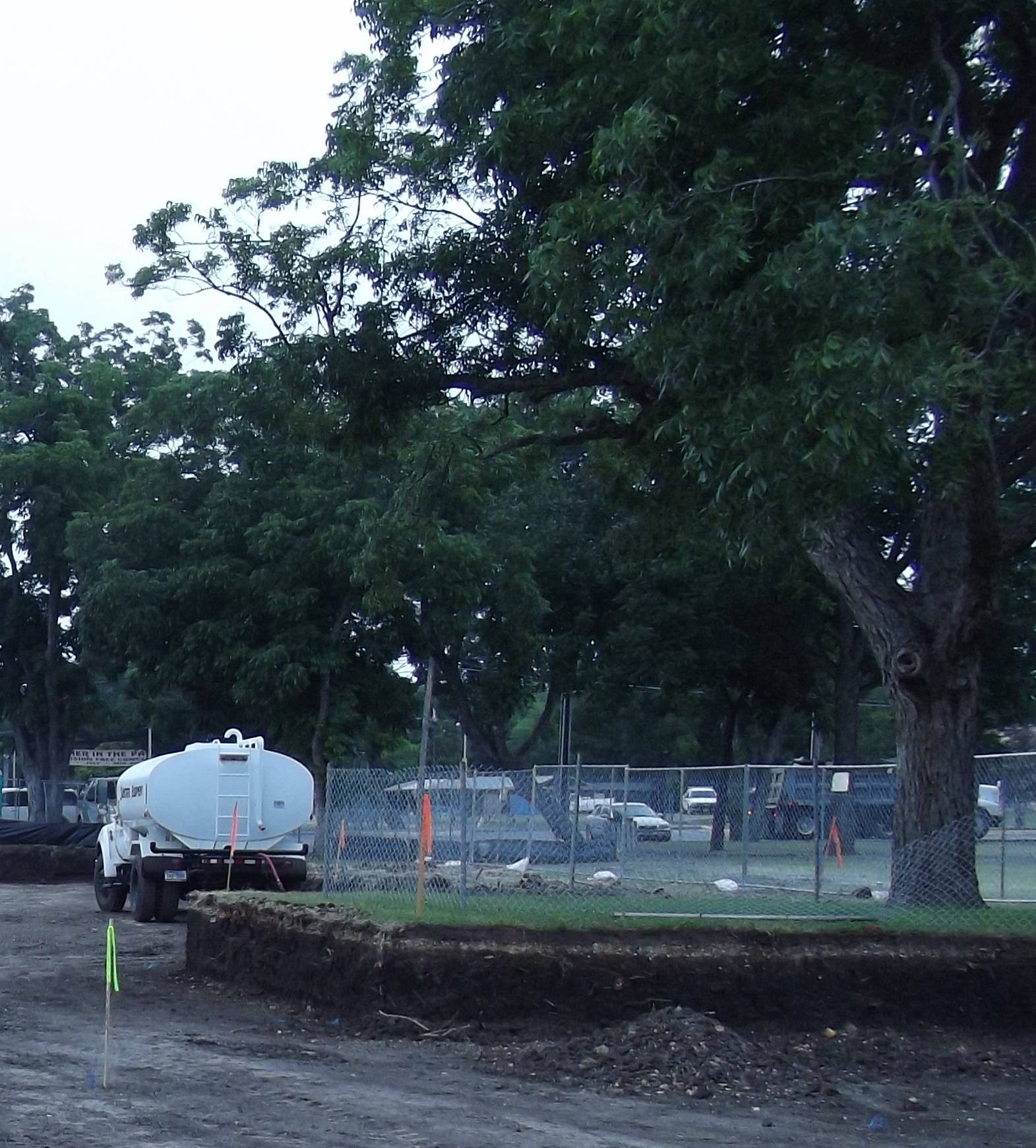River House: Remnants of 19th Century Middle Class Life

The artifacts displayed here were unearthed during the expansion and upgrade of the parking lot at the River House, a limestone structure located across C.M. Allen Parkway from the main Texas State University Campus. The property was described on the 1881 Mason map as section 28, which was divided into four lots extending to the river and fronted by the now defunct Water Street. Early cities and towns in Texas were often platted in a grid pattern, and Water Street (N. Water Street on later maps) was the last street on the original city plan before the San Marcos River. The August Koch birds-eye-view map of the City of San Marcos, from the same year, shows a modest-sized wood-frame house with several out-buildings on section 28 (Figure 5-3). The house appears to straddle the lines of lots 1 and 2. Two of the out-buildings face onto Water Street directly in front of the house, and two slightly larger buildings face onto an extension of Mountain Street (now E. Hutchison) which now forms the entrance to the San Marcos Riverwalk. All that currently remains of Water Street is the intersection at C.M. Allen Parkway and University Drive, after which C.M. Allen leaves the grid pattern and curves over to where Union Street once was. The line of pecan trees near the River House appears to follow the path of the original Water Street.

At the turn of the century the property was owned by William Green. According to the 1900 federal census, at that time there were five members of the Green household. William Green, aged 27, and his 20-year-old wife Bell had been married for a year and were the proud parents of a 1 month-old son, William, Jr. Also in the household were William Green’s 25 year-old brother, Edgar J. L. Green, Jr., and his new wife, Laura. Edgar Green’s occupation is listed as a grocery merchant. William Green is listed as president of the Light and Water Company, which had been founded by his father Ed. J. L. Green, Sr.
In 1902 the U.S. Government bought all four lots Mr. Green owned. According to the deed record, the government wanted to remove the family from the property so they could have control over the level of the river without liability to anyone living on this property. (SMCR, book 43, pp. 307-309) This was about the time when the Federal Fish Hatchery was being established. The lots were used primarily as a park at that time. (Sanborn Map, 1922) The building currently known as the River House was reportedly built in 1933 for the American Legion post of San Marcos and is made of “native stone.” (TTWC, 1946)
The artifacts presented below would have been used by the occupants of the original house that preceded the creation of the tourist park, the Green family. The lives of the members of this very young Middle Class family are reflected in the fragments of their belongings. The milk-glass canning insert reflects the influence of the Home Economics movement, which sought to transform the home through the introduction of scientific principles. The presence of small luxury goods such as the perfume bottle, the fragment of decorative cesium glass, and the 5 o'clock teaspoon hint at the family's sense of themselves within the local community and their aspirations.
